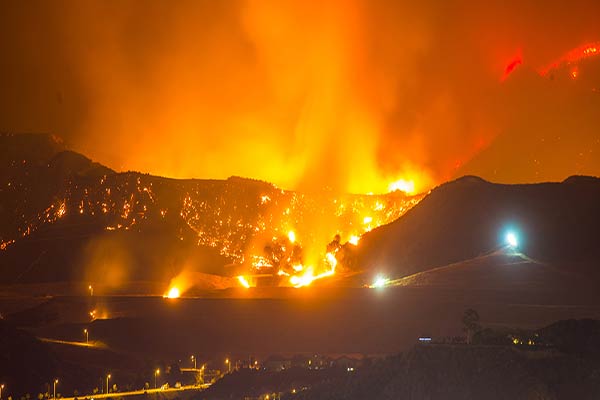California is prone to many wildfires, thus dubbing May to October “Fire Season” in the state. This is a serious problem that affects wildlife and all residents. Not only can these wildfires cause millions of dollars’ worth of residential property damage, but it can also be dangerous to the natural habitat and even humans.
Wildfires are incredibly destructive that, back in 2018, the largest recorded wildfire resulted in residential losses totaled to $7.44 billion. For homeowners, this isn’t a laughing matter that shouldn’t be taken lightly.

While we’re still months away from the next Fire Season, now is a good time to take steps to protect your home and minimize the damage or losses you may incur should the worst happen to your home.
Table of Contents
Invest in Home Insurance
Fire season often peaks from June to September. But because of climate change and other environmental factors, the season can stretch from May to October. You don’t know when another wildfire disaster will hit, so it’s best to be insured year-round. Home insurance policies that cover wildfires can minimize the financial damage to your property.
Not only does home insurance protect you year-round from wildfires, but it’s also a good investment for other types of damage to your home, belongings, and personal liability that could set you back thousands of dollars in damages.
Remove All Possible Kindle
Homes that take on the most property damage during wildfires have plenty of combustible materials outside and close to their home. These include:
- Dead vegetation from plants and trees
- Low-hanging branches on trees
- Debris from the roof and gutters
- Firewood stored too close to the house
- Combustible outdoor furniture
- Garbage and recycling containers
As much as possible, invest in outdoor furniture made with non-combustible materials like metal. Keep your lawn clean from any dried leaves and needles. Tree branches should be at least five feet away from your home. Use non-combustible mulches like stone or gravel rather than wood.
Install Class A Fireproof Roofing
Wildfire embers can land on roofs and start a fire that can make its way down to the rest of the home. An ordinary roof can catch fire, especially if it’s made of materials like wood. A non-flammable roof made of materials such as asphalt, metal, slate, or tile can prevent embers from sparking a blaze that can consume your home.
Once installed, have a professional conduct a routine maintenance inspection to ensure that your roof is still in good condition. External factors can damage your roof throughout the year, and any damage can be a risk to your household.
Keep Your Home Sealed
Your outdoors may be secured, but your home is probably filled with combustible items that only take one flying ember to ignite. In case a wildfire occurs near your home, seal your windows, doors, vents, and any crack where outdoor debris can make its way into your home. Ideally, your home’s doors and windows should be made and/or reinforced with non-combustible materials like glass or metal to prevent the outdoor heat from melting it and providing vulnerable points in your home.
Fire season may be months away, but as early as now, it’s important to start preparing your home long before the hot summers and winds arrive. Invest in home insurance to protect your home year-round (and not just for wildfires!) to minimize your losses. Keep your home clear of debris that could start a spark. And make sure your home is fitted with fireproof materials, and keep these maintained throughout the year.